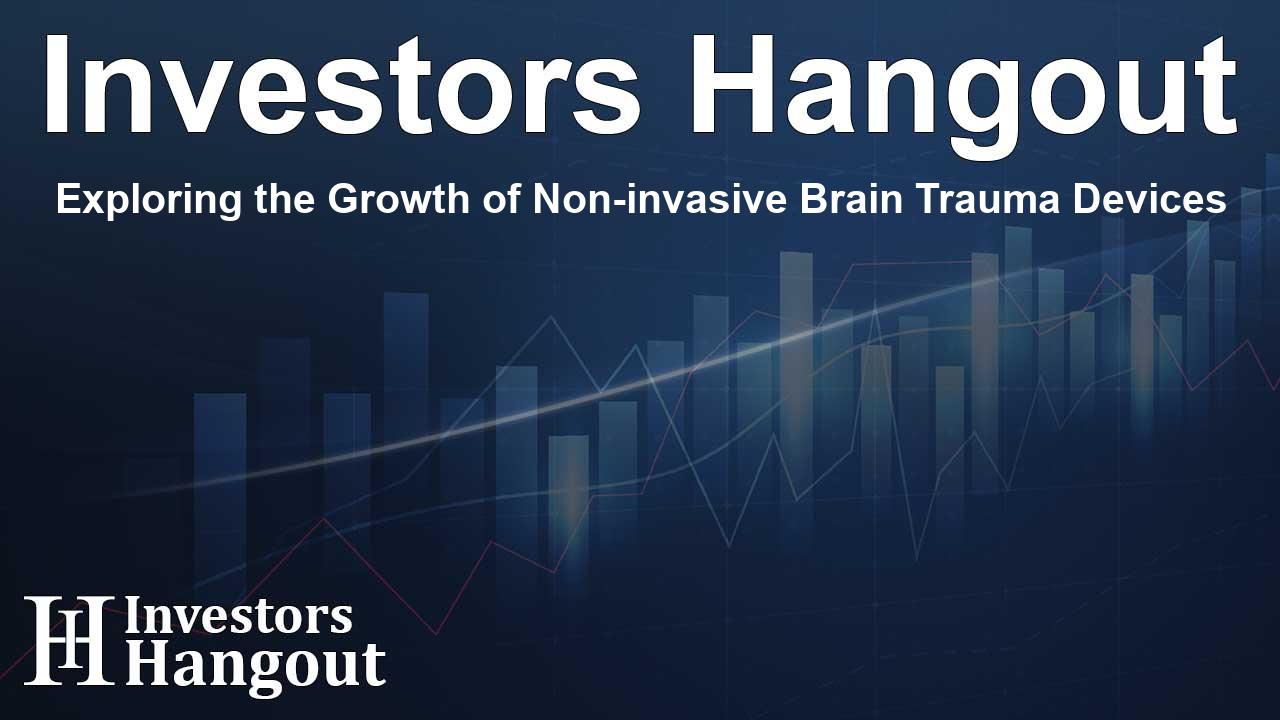Exploring the Growth of Non-invasive Brain Trauma Devices

Understanding the Non-invasive Brain Trauma Monitoring Device Market
In recent years, the global non-invasive brain trauma monitoring device market has showcased remarkable growth, driven by advancements in medical technology and an increasing awareness of the importance of early diagnosis in neurological conditions. With the market expected to reach a value of approximately USD 32.19 billion by 2034, it is crucial to explore the key components, drivers, and potential challenges within this innovative field.
Market Demand and Forecast
The demand for non-invasive brain trauma monitoring devices, such as electroencephalography (EEG) and near-infrared spectroscopy (NIRS), continues to rise. According to recent research, the market was valued at approximately USD 14.73 billion in 2024 and is projected to grow to USD 14.98 billion in 2025. The forecast indicates a compound annual growth rate (CAGR) of about 8.13% throughout the period leading up to 2034.
Technological Advancements Fueling Growth
Advancements in diagnostic technologies have significantly impacted the non-invasive brain trauma monitoring device landscape. These devices enable healthcare professionals to assess brain function without the need for surgical intervention, thereby reducing the risks associated with traditional methods. As technology progresses, these non-invasive tools evolve into efficient solutions for real-time monitoring of brain activity and intracranial pressure.
Benefits of Non-invasive Techniques
These innovative methods not only enhance diagnostic accuracy but also promote patient safety. Non-invasive monitoring avoids risks such as infections or prolonged recovery times often associated with invasive procedures. The convenience and comfort provided to patients is shaping the preference for non-invasive methods in hospitals and neurological centers.
Challenges in the Market
Despite significant growth and advantages, the industry does face challenges. A notable bottleneck is the shortage of trained professionals capable of operating advanced non-invasive monitoring devices. Misinterpretation of data due to inadequate training can lead to delays in diagnosis and treatment. Addressing this skills gap through comprehensive training programs is vital for the market’s continued expansion.
The Role of Artificial Intelligence
The integration of artificial intelligence (AI) and machine learning (ML) into these devices is transforming the landscape of neurological assessments. AI systems enhance the processing of large volumes of data, leading to quicker and more accurate evaluations. Over time, these intelligent systems cultivate improved prediction capabilities, allowing healthcare providers to identify potential neurological issues at an earlier stage.
Shifting Trends: Telemedicine's Impact
Another trend gaining momentum is the rise of telemedicine and remote patient monitoring. The COVID-19 pandemic has expedited this shift, as healthcare systems pivot towards ensuring continuity of care through technology. Patients can receive ongoing monitoring and support without needing to visit healthcare facilities, thus broadening access to critical care.
Segments of the Non-invasive Brain Trauma Monitoring Device Market
The market is primarily segmented by product type, encompassing monitoring devices and consumables, as well as by end-user segments such as hospitals and neurological centers. Hospitals are expected to dominate this market segment due to the high incidence of traumatic brain injuries and related neurological emergencies.
Geographical Insights and Market Dynamics
Regionally, North America leads the non-invasive brain trauma monitoring device market, benefiting from established healthcare frameworks and significant investment in neurological research and technology. Meanwhile, Europe and the Asia-Pacific region are also witnessing growth, with increasing awareness regarding the utility of non-invasive monitoring. Developing countries in Asia are particularly poised for growth due to rising healthcare expenditures and advancements in medical infrastructure.
Leading Companies and Competitive Landscape
The competitive landscape is increasingly vibrant, featuring key innovators and established market players. A comprehensive analysis of these companies highlights their strategies, strengths, and the dynamics that propel their growth.
Frequently Asked Questions
What factors are driving the growth of the non-invasive brain trauma monitoring device market?
Key factors include technological advancements, growing public awareness of the benefits of non-invasive procedures, and an increase in traumatic brain injuries.
How significant is the impact of AI and ML on this market?
AI and ML significantly enhance the efficiency and accuracy of neurological monitoring, providing predictive capabilities that can revolutionize patient care.
Why is there a need for specialized training in operating these devices?
Proper training is necessary to ensure accurate data interpretation and to prevent misdiagnosis, which can adversely affect patient outcomes.
What role does telemedicine play in the monitoring of neurological conditions?
Telemedicine expands access to care by allowing continuous monitoring without the need for physical appointments, significantly benefiting patients in remote areas.
What is the projected market size for non-invasive brain trauma monitoring devices by 2034?
The non-invasive brain trauma monitoring device market is projected to reach approximately USD 32.19 billion by 2034, reflecting ongoing growth trends.
About The Author
Contact Lucas Young privately here. Or send an email with ATTN: Lucas Young as the subject to contact@investorshangout.com.
About Investors Hangout
Investors Hangout is a leading online stock forum for financial discussion and learning, offering a wide range of free tools and resources. It draws in traders of all levels, who exchange market knowledge, investigate trading tactics, and keep an eye on industry developments in real time. Featuring financial articles, stock message boards, quotes, charts, company profiles, and live news updates. Through cooperative learning and a wealth of informational resources, it helps users from novices creating their first portfolios to experts honing their techniques. Join Investors Hangout today: https://investorshangout.com/
The content of this article is based on factual, publicly available information and does not represent legal, financial, or investment advice. Investors Hangout does not offer financial advice, and the author is not a licensed financial advisor. Consult a qualified advisor before making any financial or investment decisions based on this article. This article should not be considered advice to purchase, sell, or hold any securities or other investments. If any of the material provided here is inaccurate, please contact us for corrections.
